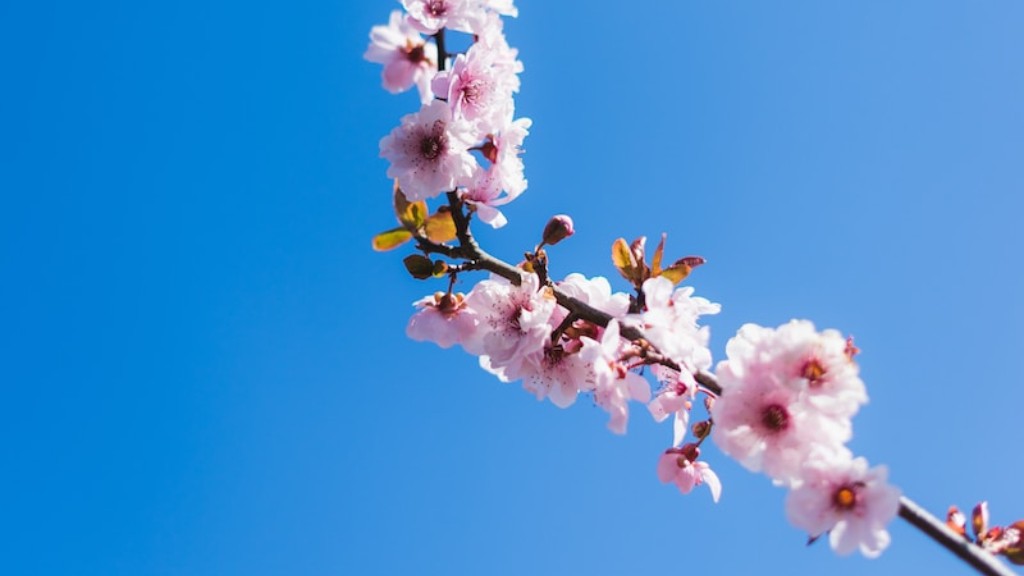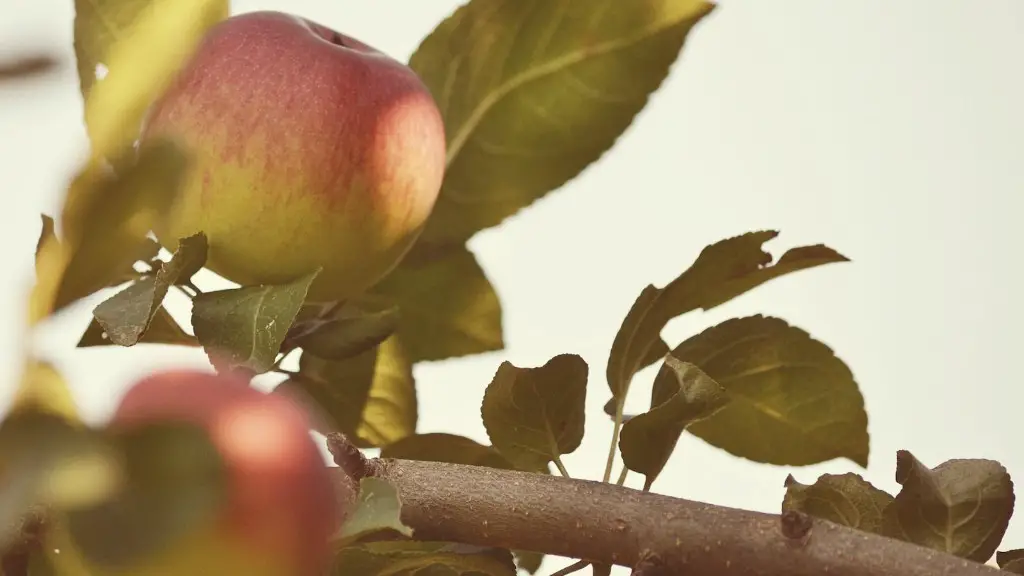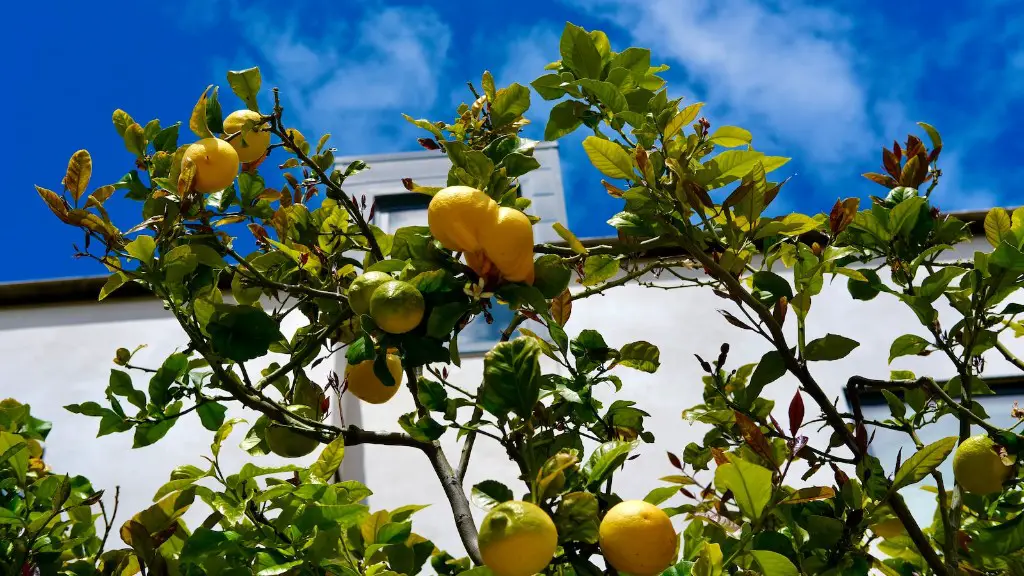Lemon trees are one of the most popular citrus trees grown in home gardens. They are relatively easy to grow and provide a refreshingly tart flavor to many dishes. But even the most carefully tended lemon tree can run into problems. If your lemon tree is looking a bit worse for the wear, don’t despair. With a little effort, you can revive even the most lackluster lemon tree.
There are a few things you can do to revive a lemon tree. First, make sure it is getting enough water. Lemons need at least one inch of water per week. Second, fertilize your lemon tree with a citrus fertilizer. Third, prune your lemon tree to remove any dead or diseased branches. Finally, make sure the tree is getting enough sunlight. If it is not, move it to a sunnier location.
Can a lemon tree come back after losing leaves?
When a tree drops its leaves due to high heat or water stress, it will usually start to grow new leaves within a couple of weeks, provided that conditions return to normal. Citrus trees are heavy feeders, so it’s possible that you’re not fertilizing them enough.
There are many potential causes of a lemon tree failing, including pests, disease, nutrient deficiency, and environmental stressors. Symptoms of a failing lemon tree include leaf drop, abortion of flowers, and shriveling. More serious symptoms can include dieback and death of the tree. If you suspect your lemon tree is failing, consult with a certified arborist or other tree care expert to diagnose the problem and develop a plan for treatment.
Why has my lemon tree lost its leaves
Loss of leaves can be caused by many factors, including draughts, too low or high temperatures in winter, and often too much water in winter. Citrus trees prefer a cool winter rest, so provide lemons with a minimum winter night temperature of not less than 10°C (50°F) and calamondin oranges with 13°C (55°F).
1. Trim away any dead, kinked, or excessive roots.
2. Unclog the drainage hole.
3. Repot in fresh, high quality potting mix.
Is my lemon tree dead if it loses all its leaves?
If your citrus tree is losing its leaves, don’t panic! This is perfectly normal for citrus trees and is their way of letting us know that they are not happy about something. Once you figure out what is causing the problem, you can take steps to fix it and your tree will be back to normal in no time.
A tree with yellow or cupped leaves, or leaves that don’t look perky AFTER watering can indicate excessive watering and soggy roots. Give your tree water less often. Citrus prefer infrequent, deep watering to frequent, shallow sprinklings.
Is coffee grounds good for lemon trees?
Lemon trees benefit from the nitrogen and calcium in coffee grounds. The organic material also improves the soil tilth. Only use coffee grounds after they have been fully decomposed in the compost pile.
Lemon trees are susceptible to a number of problems, including citrus canker, sooty mold, botrytis blight, anthracnose, and lemon scab.
Citrus canker is a bacterial disease that causes lesions on the leaves of lemon trees. Sooty mold is a fungus that grows on the leaves of lemon trees and can cause black moldy spots. Botrytis blight is a fungal disease that can cause fuzzy gray mold and brown spots on the leaves of lemon trees. Anthracnose is a fungal disease that can cause tan spots with dark outlines on the leaves of lemon trees. Lemon scab is a bacterial disease that can cause brown scabs on the leaves of lemon trees.
To prevent these problems, it is important to provide proper care for your lemon tree. This includes watering the tree regularly, fertilizing the tree, and pruning the tree as needed.
When should you not water a lemon tree
Watering your lemon tree is essential to its growth. Be sure to water it well every alternate day, deep watering so that the root ball gets hydration. Once the plant is somewhat established, you can taper the watering to twice a week and then once a week.
It is important to water lemon trees regularly and deeply in order to keep the root system healthy. When plants dry out, they don’t get enough nutrients and this can be a major problem for containerized trees. After watering, check that the water has soaked into the soil and not simply drained away, leaving the roots dry.
How do you take care of a potted lemon tree?
There are a few things to keep in mind when it comes to keeping your hermit crab warm. If you live near the beach or in a milder climate you want to keep them as warm as possible. One way to do this is to keep their terrarium out of direct sunlight and in a place where they will not be exposed to drafts. Another way to keep your hermit crab warm is to use a heat lamp. You can find heat lamps at most pet stores. Just make sure to get one that is specifically for reptiles and not too hot.
If you have a lemon tree that is beginning to lose leaves as winter approaches, bring it indoors and place it in a sunny window. This will help to prevent further leaf loss and frost damage so that the tree can recover in the spring.
Can I use Miracle Grow on my citrus trees
Fertile Citrus can be used on all fruit, citrus and palm trees. It is an all natural product which contains micronutrients and essential oils. Fertile Citrus will help trees to achieve optimal growth and production.
Water your Meyer Lemon Tree when the soil is dry to the touch 2 inches below the surface. Slowly pour water into the pot and count to 20, or wait until you see water running out of the bottom of the pot. Generally, Meyer Lemon Trees need water every one to two weeks.
How do you fix a sick citrus tree?
To care for a sick citrus tree, you will need to determine what is ailing the tree. Inspect the tree for pest and fungal pathogen infestations. If the tree has pests or fungus, spray the tree with the appropriate treatment. Prune dead and diseased wood. Fertilize the citrus tree as soon as you see new growth.
The most commonsymptoms and signs of tree root disease are reduced vigor, dull green leaf color, poor new growth, and twig dieback. If extensive root damage occurs, the leaves suddenly wilt and dry on the tree. The disease usually starts in larger roots and spreads into the crown.
What is good fertilizer for lemon trees
Down to Earth Organic Citrus Fertilizer is a great lemon tree fertilizer for several reasons. First, it has an NPK ratio of 6-3-3, which is great for lemon trees. It is also applied three to four times per year, which helps keep the lemon tree healthy and vibrant. Additionally, it contains secondary nutrients like calcium, sulfur, zinc, and iron, which are essential for the lemon tree’s growth and health.
If your trees have been waterlogged or flooded, it may take a few seasons for them to recover. Keep an eye on your trees and look for any continuing signs of distress. Many symptoms may not pop up until months later, especially if we have a prolonged hot, dry period.
Warp Up
There are a few things you can do to revive a lemon tree. First, make sure it is getting enough water. Second, fertilize the tree with a lemon fertilizer. Third, prune the tree to remove any dead or dying branches. Finally, check the tree for pests and diseases and treat accordingly.
Lemon trees are a popular citrus tree that can be found in many homes. Though they are easy to care for, they can sometimes get sick or die. If your lemon tree is not looking its best, there are a few things you can do to revive it. With a little care and attention, your lemon tree will be healthy and thriving in no time!





